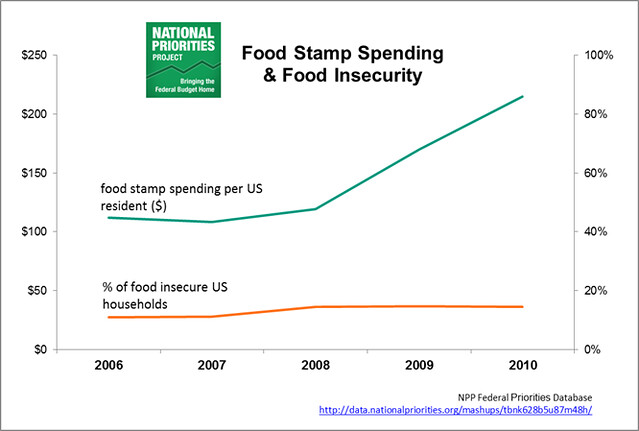Data Story: Food Insecurity and Food Stamps
By
Becky Sweger
Posted:
|
Social Insurance, Earned Benefits, & Safety Net,
Transparency & Data
Data from the Census Bureau show that the percentage of families in poverty rose between 2008 and 2010.1 And it's no secret that unemployment and underemployment numbers also rose during that time.2 So when reviewing the latest food insecurity numbers, I was surprised to see that the nationwide percentage of food insecure households was virtually unchanged between 2008 and 2010.3
The USDA defines food insecure as households that have difficulty providing enough food for all members; therefore, it seems logical that this number would go up along with poverty and underemployment.
Curious, I decided to see if federal spending on food stamps had changed at all. Sure enough, federal spending on the food stamp program rose 83% between FY 2008 and FY2010.
I can't say definitively that the food stamp program kept additional families from becoming food insecure, but plotting the numbers together paints an interesting picture.
This exercise is a great example of why NPP is committed to taking data from an array of government agencies and combining it in a single search tool. Is there more to this story than food stamp spending? Quite likely, and we have data on WIC, TANF (welfare), and many other programs for those who would like to explore further. Get started with our Quick Start Guide, and be sure to drop a line with questions, feedback, or examples of your work.
1 Census Bureau American Community Survey: table S1702
2 http://www.bls.gov/lau/stalt.htm
3 http://www.ers.usda.gov/Briefing/FoodSecurity/
